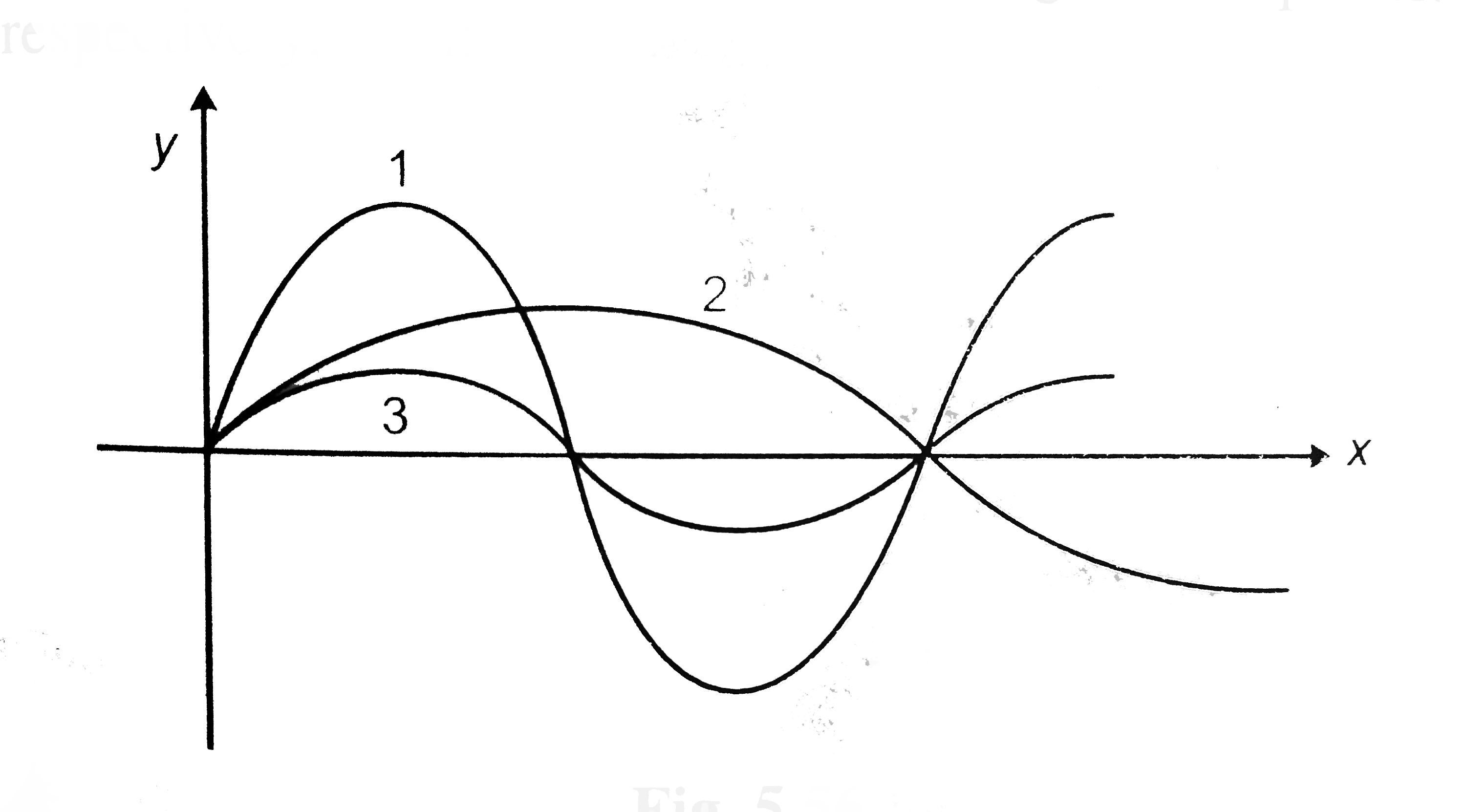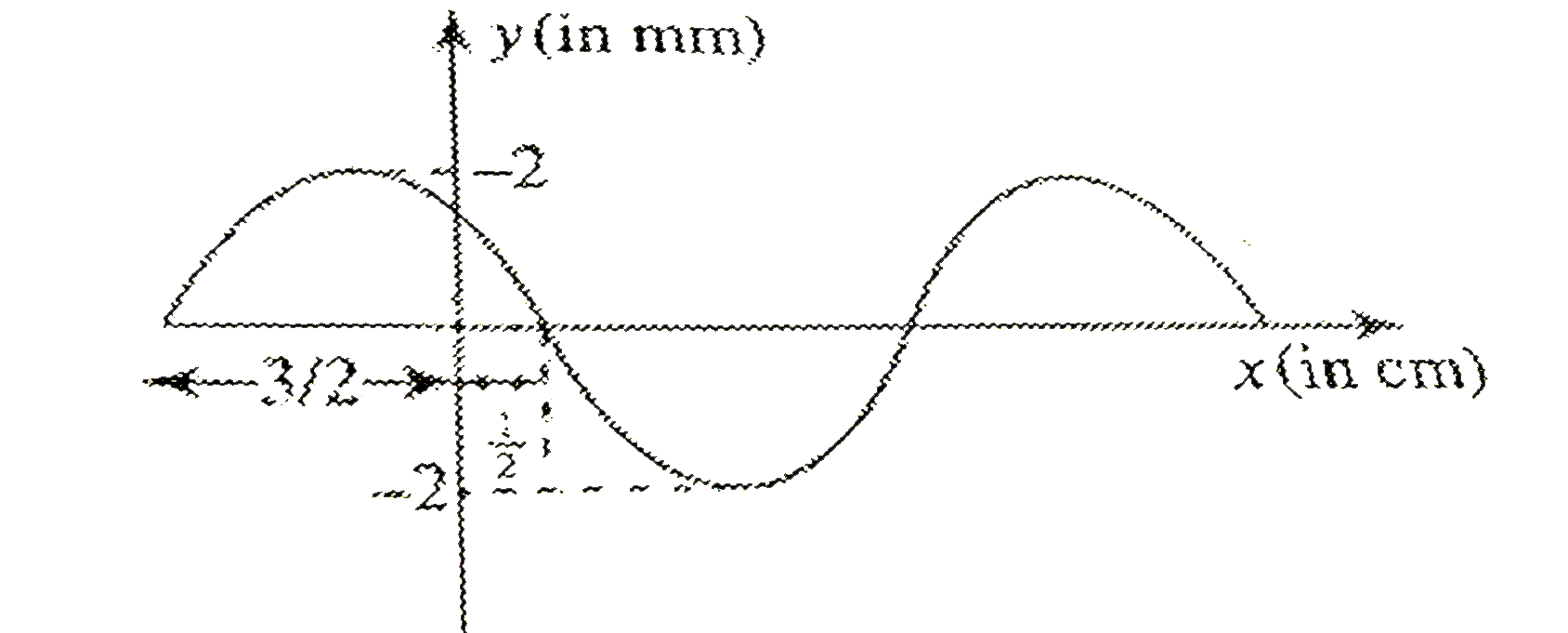A wave moving with constant speed on a uniform string passes the point x=0 with amplitude A0, angular frequency ω0 and average rate of energy transfer P0. As the wave travels down the string it gradually loses energy and at the point x=l, the average rate of energy transfer becomesP0/2. At the point x=l. Angular frequency and amplitude are respectively:
ω0and A0√2
ω0√2andA0
less then ω0 and A0
ω0√2 and (A00√2
The correct Answer is:A
To solve the problem, we need to analyze how the amplitude and angular frequency of a wave change as it travels down a string while losing energy.
1. Understanding the Energy Transfer Relation:
The average rate of energy transfer P for a wave on a string is given by the formula:
P=12μA2ω2V
where:
- μ is the linear mass density of the string,
- A is the amplitude of the wave,
- ω is the angular frequency,
- V is the speed of the wave.
2. Initial Conditions:
At the point x=0:
- Amplitude = A0
- Angular frequency = ω0
- Average rate of energy transfer = P0
Thus, we can write:
P0=12μA20ω20V
3. Energy Transfer at Point x=l:
At the point x=l, the average rate of energy transfer becomes:
P=P02
Let the new amplitude at this point be A′ (which we need to find), while ω remains constant at ω0.
Therefore, we can write:
P02=12μ(A′)2ω20V
4. Setting Up the Equations:
From the first equation:
P0=12μA20ω20V
From the second equation:
P02=12μ(A′)2ω20V
5. Dividing the Equations:
Dividing the second equation by the first gives:
P02P0=12μ(A′)2ω20V12μA20ω20V
Simplifying this, we get:
12=(A′)2A20
6. Solving for A′:
Rearranging gives:
(A′)2=A202
Taking the square root:
A′=A0√2
7. Angular Frequency:
Since the angular frequency ω remains constant, we have:
ω′=ω0
Final Result:
At the point x=l:
- Amplitude A′=A0√2
- Angular frequency ω′=ω0
The average rate of energy transfer P for a wave on a string is given by the formula:
P=12μA2ω2V
where:
- μ is the linear mass density of the string,
- A is the amplitude of the wave,
- ω is the angular frequency,
- V is the speed of the wave.
At the point x=0:
- Amplitude = A0
- Angular frequency = ω0
- Average rate of energy transfer = P0
P0=12μA20ω20V
At the point x=l, the average rate of energy transfer becomes:
P=P02
Let the new amplitude at this point be A′ (which we need to find), while ω remains constant at ω0.
P02=12μ(A′)2ω20V
From the first equation:
P0=12μA20ω20V
From the second equation:
P02=12μ(A′)2ω20V
Dividing the second equation by the first gives:
P02P0=12μ(A′)2ω20V12μA20ω20V
Simplifying this, we get:
12=(A′)2A20
Rearranging gives:
(A′)2=A202
Taking the square root:
A′=A0√2
Since the angular frequency ω remains constant, we have:
ω′=ω0
At the point x=l:
- Amplitude A′=A0√2
- Angular frequency ω′=ω0
Similar Questions
Graph shows three waves that are separately sent along a string that is stretched under a certain tension along x-axis. If ω1,ω2andω3 are their angular frequencies, respectively, then:
 View Solution
View SolutionGraph shows three waves that are separately sent along a string that is stretched under a certain tension along x-axis. If ω1,ω2andω3 are their angular frequencies, respectively, then:
 View Solution
View SolutionA particle stars SHM at time t=0. Its amplitude is A and angular frequency is ω. At time t=0 its kinetic energy is E4. Assuming potential energy to be zero and the particle can be written as (E=total mechanical energy of oscillation).
View SolutionWhich of the following options is representing average energy per unit volume of a travelling wave? (Where rho is density, omega is angular frequency, A is amplitude)
View SolutionA 200Hz wave with amplitude 1mm travels on a long string of linear mass density 6g/m keep under a tension of 60N.
(a) Find the average power transmitted across a given point on the string.
(b) Find the total energy associated with the wave in a 2.0m long portion of the string.View SolutionA 200Hz wave with amplitude 1mm travels on a long string of linear mass density 6g/m keep under a tension of 60N.
(a) Find the average power transmitted across a given point on the string.
(b) Find the total energy associated with the wave in a 2.0m long portion of the string.View SolutionA transverse wave of amplitude 0.50 mm and frequency 100 Hz is produced on a wire stretched to a tension of 100 N. If the wave speed is 100 m s^-1, what average power is the source transmitting to the wire ?
View SolutionA trasverse wave of amplitude 0.50mm and frequency 100Hz is produced on a wire stretched to a tension of 100N. If the wave speed is 100m/s. What average power is the source transmitting to the wire?
View SolutionA standing wave pattern of maximum amplitude 2 mm is obtained in a string whose shape at t = 0 is represented in the graph.

If the speed of the travelling wave in the string is 5 cm/s, then find the component waves.View SolutionThe equation of a transverse wave travelling along x-axis is given by y = 10 sin π= (0.01 x- 2.0t) where y and x are represented in centimeters and, in seconds. Find the amplitude, frequency velocity and wavelength of the wave.
View Solution
